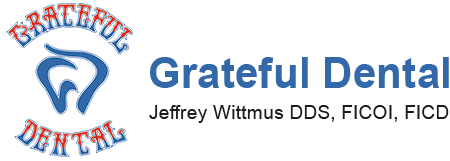Laser technology is utilized across many medical and dental settings. The advantages of using dental lasers, specifically diode lasers, affords us the opportunity to bring a non-surgical option to patients to kill bacteria pre-procedurally in the sulcus for decontamination as well as an adjunct to periodontal therapy. This laser-assisted scaling and root planing allows us the ability to prevent free floating bacteria from causing inflammation and destruction, as well as treat the biofilm diseased tissue to assist in healing and regeneration without cutting away the tissue.
The wavelengths emitted from diode lasers are absorbed by melanin and hemoglobin in soft tissue. Oral biofilm communities increase with ineffective cleaning subgingivally, causing healthy pink tissue to become red in color (thus increasing the melanin concentration) and bleed. Since diseased tissue has red-orange bacteria, the diode laser, at certain settings, is more attracted to the diseased tissue while being less attracted to healthy tissue. Therefore, it is advantageous to use the diode laser in the sulcus to combat diseased tissue or to stop bleeding by targeting these specific bacteria.
When used preprocedurally, diode laser can lessen the prevalence of single, free-floating bacteria in the periodontal pocket, therefore preventing the buildup of biofilms and in turn, reducing or preventing the periodontal destruction process. Studies have shown that diode lasers used subgingivally reduced the incidence of bacteremia associated with ultrasonic scaling. Furthermore, studies suggest that lasers are superior to antibiotics for the elimination of bacteria. Since antibiotics are not 100% effective against all strains of oral bacteria, laser therapy is the optimal method for use especially with high risk patients.
Once the biofilm has invaded the gum pocket, the diode laser will destroy biofilm and interact with tissue to promote healing and regeneration. Our instruments disrupt and remove the biofilm from our root and tooth surfaces, but that still leaves behind the bacteria that’s invaded the tissue. In these more diseased pockets, non-surgical assisted periodontal therapy removes biofilm embedded in the necrotic tissue, reducing periodontal pathogens which allows the pocket to recolonize with healthy bacterial flora. The biostimulation properties of lasers include collagen production, enzyme activity, micro- and lymph circulation, and bone stimulating fibroblast and osteoblast proliferation. Diode lasers help heal gum pockets and have been shown to assist in growing back bone and fostering quicker healing without compromising the integrity of the tissue. This is a more conservative approach in hopes of preventing the need for periodontal surgery.
Incorporating non-surgical laser decontamination and laser-assisted scaling and root planing therapy into our dental hygiene protocol allows us the opportunity to prevent disease, treat active infection, and promote soft tissue healing and reduction of periodontal disease. It is a more accepted form of adjunct therapy with great patient compliance.


